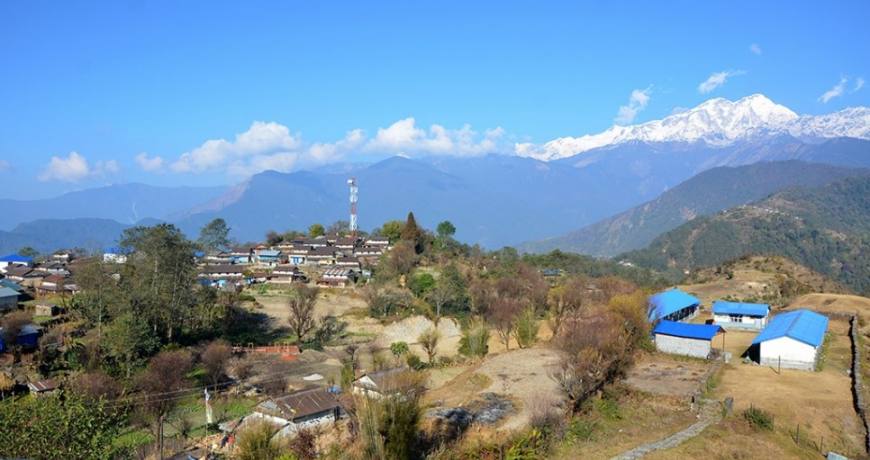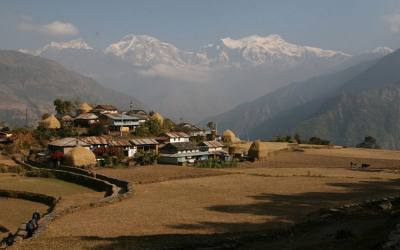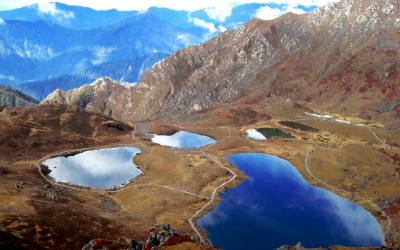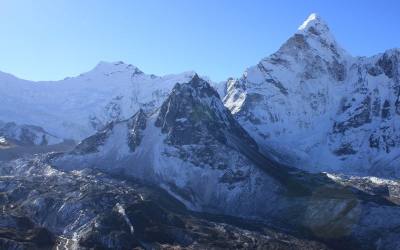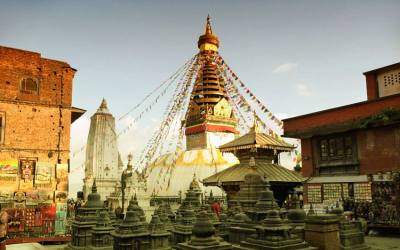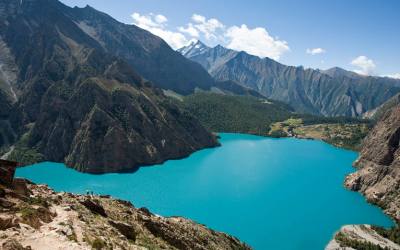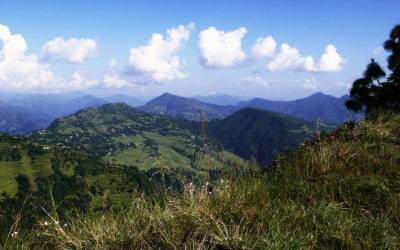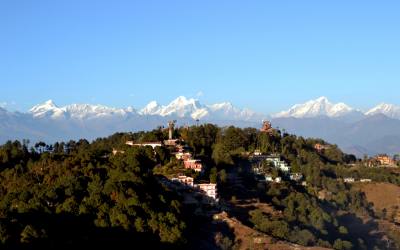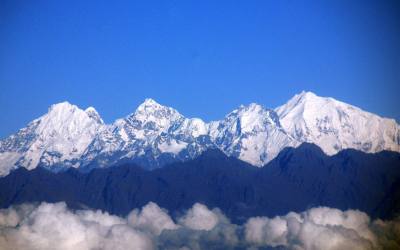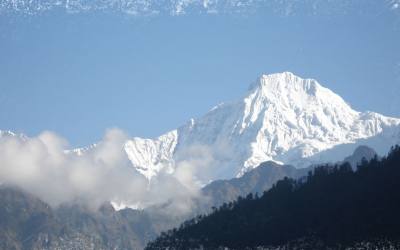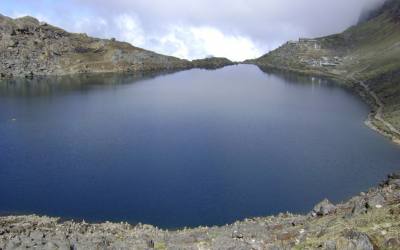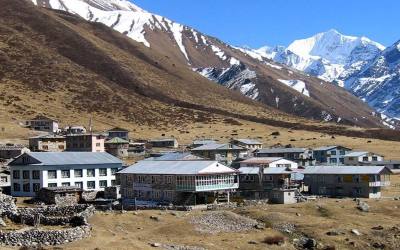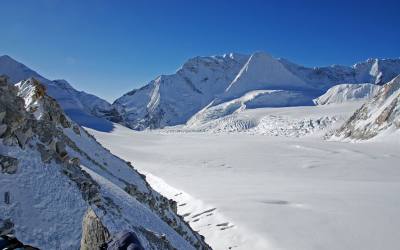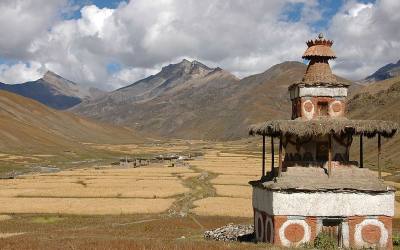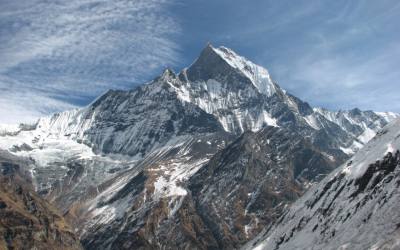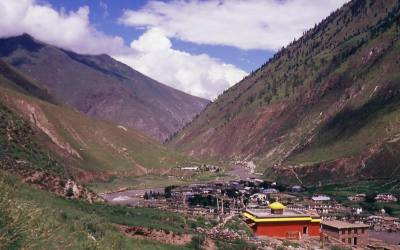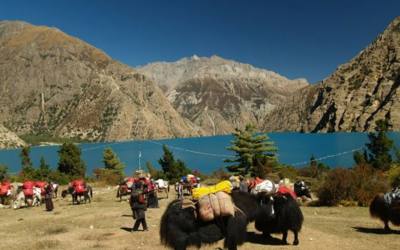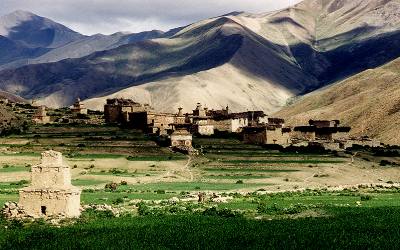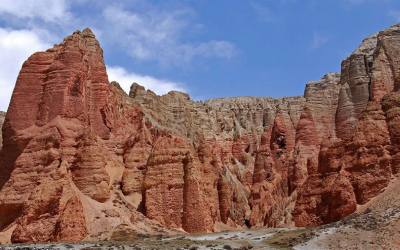Annapurna area is the most popular trekking region in Nepal. the deep valleys and high mountains encircling the giant Annapurna himal embrace a wide range of peoples and terrains, from subtropical jungle to a geographic extension of high, dry , Tibetan Plateau. The scenery is superb mix of lush vegetation, mountain peaks and an endlessly changing procession of people
Flora and Fauna
The range of geographical and climatic regions has led to a diverse variety of flora and fauna with in the Annapurna region. these parts of area are heavily cultivated and the landscape is terraced paddy fields for most of the year.the higher up in the hills the natural vegetation changes from the tropical species to more temperate stands of forest trees including oak, beech and rhododendron.
People and culture
The most prominent ethnic groups in the annapurna region are the Gurung, Braman, chetri, Thakali and the Manangba.
Day 01: Arrive in Kathmandu. Airport & Transfer to Hotel
Day 02: Free day in Kathamandu
Day 03: Kathmandu. to Besisahar by bus. Bus drive will take approximately 8hrs.
Day 04: Besisahar to Baglungpani 4hrs
Day 05: Baglungpani to Ghanpokhara
Day 06: Ghanpokhara to Tamagaun
Day 07: Tamagaun to Taksar
Day 08: Taksar to Saklung
Day 09: Saklung to Pokhara
Day 10: Free day in Pokhara
Day 11: By bus to Chitwan national park. Bus ride will take approximately or (Drive back to kathmandu)
Day 12: Activities in Chitwan national park
Day 13: Back to Kathmandu. by Tourist bus. or Tour ends
Day 14: Free day in Kathamdnu
Day 15: Tour ends
Day 01: Arrive in Kathmandu and transfer to Hotel
Upon arrival in Kathmandu. Our airport representative will be waiting outside the airport terminal a few metres from the exit door. Please check your name at play card. He will bring you to hotel in kathmandu. The drive from the airport to the hotel is around 20 minutes
Day 02: Free day in Kathamandu or self sight seeing tour ( option are)
Hanumandhoka ( Kathamdnu Durbar Square ):It is the historic seat of royalty. The Durbar Square , with its old temples and palaces, epitomizes the religious and cultural life of people. It is here that kings of Nepal are crowned and their coronations solemnized. Interesting things to see here are, Taleju temple built by king Mahendra Malla in 1954 AD, the temple of Kal Bhairab , the god of destruction, Nautale durbar, the statue of King Pratap Malla, the big drum and the Jaganath temple. It was listed in the UNESCO world heritage monument list in 1979.
On the right hand corner, a large wooden lattice screen hides an enormous gilded face of Sweta Bhairab. The screen is removed only during the Indra Jatra festival.. there are also the Numismatic museum and Tribhuban museum inside the Hanuman Dhoka palace building . Photography is prohibited inside the museums. Both the mseums remain closed on Tuesday and government holidays.
Swoyambhunath ( Monkey temple)
This is one of the world’s most glorious Buddhist Chaityas. It is said to be 2,000 years old. Painted on the four sides of the spire’s base are the all seeing eyes of Lord Budhha. It is 3Km west of Kathmandu city and it situated on a hillock about 77 m commands an excellent view of the Valley. This stupa is the oldest of its kind in Nepal . It was listed in the UNSCO world Heritage Monument List in 1979.
Day 03: Kathmandu. to Besisahar by bus. Bus drive will take approximately 8hrs.
Day 04: Besisahar to Baglungpani 4hrs
Trail follows the bank of Marshandi River for sometime than it climbs up through terraced filed, forest and old Gurung village to Banglungpani. In clear day there are 360degre panoramic views of Manasulu range and Annapurna range.
Day 05: Baglungpani to Ghanpokhara
Trail continues through forest in the ridge. There are good views of valley’s in both side. Passing through an interesting village(Ghalegaun) with a height of 2250m. from here trail gently ascent to Ghanpokhara.
Day 06: Ghanpokhara to Tamagaun
Trail descends through Bhujung village to Bhujung river. Cross the bridge and trek through terraced field and mixed forest to Tamagaun.
Day 07: Tamagaun to Taksar
It is a pleasant walk through terraced field and passing through gurung villages to Taksar.
Day 08: Taksar to Saklung
The trail continues through village and it descends towards to Modi river. Cross the suspension bridge and climb steep through forest to Saklung.
Day 09: Saklung to Pokhara
Trail descend through village and forest to Begnas tal. From here take a one and haif hour bus ride to Pokhara.
Pokhara is set in a lovely valley at the foot of the Machapuchare so you get spectacular views of the mountains from all parts of the town. It is quite different from Kathmandu, with few temples, but it does have plenty of scenic attractions and is close to the mountains. There are some interesting short walks or bicycle rides from Pokhara, you can swim and canoe on Lake Phewa or just watch the last rays of the sun stream across the dip in the mountains that hold the lake. Along the lakeside road there is a continuous stretch of small hotels, restaurants and shops; it’s an area which still has a bit of the old hippy scene feel about it.
Day 10: Free day in Pokhara or self sight seeing tour ( option are)
Pokhara is a remarkable place of natural beauty. Situated at an altitude of 827m from the sea level and 200km west of Kathmandu valley, the city is known as a center of adventure with several beautiful lakes and offers stunning panaromic views of Himalayan peaks.
The serenity of lakes and the magnificence of the Himalayas rising behind them create an ambience of peace and magic. So today the city has not only become the starting point for most popular trekking and rafting destinations but also a place to relax and enjoy the beauty of nature.
Pokhara is part of a once vibrant trade route extending between India and Tibet. To this day, mule trains can be seen camped on the outskirts of the town, bringing goods to trade from remote regions of the Himalaya. This is the land of Magars and Gurungs, hardworking farmers and valorous warriors who have earned worldwide fame as Gurkha soldiers. The Thakalis, another important ethnic group here, are known for their entrepreneurship.
The climate of Pokhara is slightly warmer than Kathmandu with daytime temperature hovering around 15 degrees Celsius in winter and 35 degrees in summer. The monsoon season which lasts from mid-June to mid-September is very wet; in fact Pokhara records the highest rainfall in the country. Best time to visit is between October and April.
The activities of foreign visitors to Pokhara focus around two districts known as Damside and Lakeside (or Pardi and Baidam, in Nepali, respectively). These two areas, with their strips of hotels and restaurants, are a few kilometers south-west of the main Pokhara bazaar. More
Phewa Lake
Begnas lake and Rupa lake
Barahi temple
World Peace Pagoda
Devi’s Fall
Gupteswar Gupha
Mahendra Gupha
Day 11: By bus to Chitwan national park. the bus journey will take approx 5 hours.
After arriving and settling in, we are introduced to the camp staff and resident naturalists who will discuss our program at Royal Park Wildlife Resort. There is some flexibility and activities may vary with the time of year, and known wildlife movements and locations.
Day 12: Activities at Chitwan national park.
An early morning excursion could include either another elephant safari to different parts of the park in search of the great Indian rhino, deer and exotic bird life or joining one of several other activities. Tiger sightings are rare these days, but these magnificent animals do inhabit the park. After breakfast we leave the lodge for a trip by dugout canoe on the Rapti River. This is an exciting trip with chances to view marsh mugger crocodiles and various birds that inhabit the riverbanks. In the afternoon we visit the elephant breeding centre with our guide, who will explain exactly how these amazing creatures are looked after. There will even be an opportunity to help bathe the elephants! The evening is free to relax over a drink in the heart of the jungle.
Wake up call.
06:00 - Tea/coffee followed by nature walk. An excellent opportunity to see a great many of those 524 different species of birds found in Chitwan.
07:50 - Breakfast.
09:00 - Canoe ride along the Rapti river. An excellent opportunity for bird watching and for seeing the 2 rare species of crocodiles; the Marsh Mugger and the fish eating Gharial.
10:00 - Visit to the Government Elephant Breeding Center. Walk/drive back through the Tharu villages to our Resort where you can take a leisurely swim or relax by the poolside. You can also spend the time before lunch to gaze at the fishes found in Chitwan in your own fish pond or play a game of tennis or pool table with your friends or just spend a few quiet moments in our library with a book. You can even let your children play by themselves in our children’s playground. Your choices are limitless.
13:00 - Lunch.
15:00 - Visit to the National Park Visitor’s center where you can learn more about the history of the National Park and about wildlife.
16:00 - Village tour to a nearby ethnic Thaw village where you will learn more about the life and lifestyles of the Thaws.
19:00 - Tharu cultural dance presentation or a slide show presentation.
20:00 - Dinner.
Day 13: Return back to Kathmandu by Tourist bus. The bus journey will take approx 5 hours.
Day 14: Free day in Kathamdnu or self sight seeing ( option are)
Bhaktapur durbar Squares:
The Golden Gate is the entrance to the main courtyard of the Palace of 55
Windows, built by King Ranjit Malla. The gate is one of the most beautiful
and richly carved specimens of its kind in the entire world. This gate is
embellished with deities and monsters with marvelous intricacy. The palace
of 55 Window was built in 1700 AD. Among the brick walls in their gracious
setting and sculptural design, is a balcony of 55 windws. This balcony is a
masterpiece of wood carving. The stone temple of Batsala Devi which is also
located in the Durbar Square is full of intricate carvings. This temple also
sets a beautiful example of Shikhara style architecture in Nepal . There is a
bronze bell on the terrace of the temple which is also known as the Bell of
Barking Dogs. This colossal bell, placed in 1737 AD, used to ring to signal
curfew those days.
The main square of the city contains innumerable temples and other
architectural showpieces like the Lion Gate, the statue of King Bhupatindra
Malla, the Picture Galley, the Batsal Temple , etc. A magnificent statue of
King Bhupatindra Malla in the act of worship is placed on the column facing
the palace. It was listed in the UNESCO World Heritage Monument list in
1979.
Patan
The ancient city of Patan , lying 5 km southwest of kathmandu, is known as the city of fine arts, The city is full of Hindu temples and Buddhist
monuments. The diversity of the medieval culture that allowed both Hinduism and Buddhism to flourish has left a rich legacy of impressive sightseeing in this city for today’s visitors.
Patan Durbar Square:
Situated in the heart of the city, constitutes the focus of visitor’s
attraction. The square is full of ancient palaces, Temple and shrines, noted for their exquisite carvings. The Patan durbar Square consist of three main chowks or countryards, the Central Mul Chowk, Sundari Chowk and Keshar narayan Chowk, The Sundari Chowk holds in its center a masterpiece of stone architecture. The Royal Bath called Tushahity. It was listed in the UNESCO world Heritage Monument list in 1979.
Krishna Mandir:Built in 1637 AD, the temple of Lord Krishaa holds a commanding position in the palace complex of Patan. It is supposed to be the first specimen of Shikhara style architecture in Nepal . It is the only temple in Nepal having 21 spires and is completely 21 spires and is completely mad of stone.
Boudhanath stupa
Boudhanath Stupa (or Bodnath Stupa) is the largest stupa in Nepal and the
holiest Tibetan Buddhist temple outside Tibet . It is the center of Tibetan
culture in Kathmandu and rich in Buddhist symbolism. The stupa is located in
the town of Boudha , on the eastern outskirts of Kathmandu .
History
Bodnath was probably built in the 14th century after the Mughal invasions;
various interesting legends are told regarding the reasons for its
construction. After the arrival of thousands of Tibetans following the 1959
Chinese invasion, the temple has become one of the most important centers of
Tibetan Buddhism. Today it remains an important place of pilgrimage and
meditation for Tibetan Buddhists and local Nepalis, as well as a popular
tourist site.
Pashupatinath Temple :
Situated 5km east of kathamandu, the temple of Lord Shiva , Pashupatinath,
with two tired golden roof and silver door is considered one of the holiest
for Hindus. Although only Hindus are allowed inside the temple, visitors can
clearly see the temple and the activites performed in the Temple premises
from the eastern bank of the Bagmati river. The Temple was listed in the
UNESCO world heritage Monument List in 1979
Day 15: Tour ends
